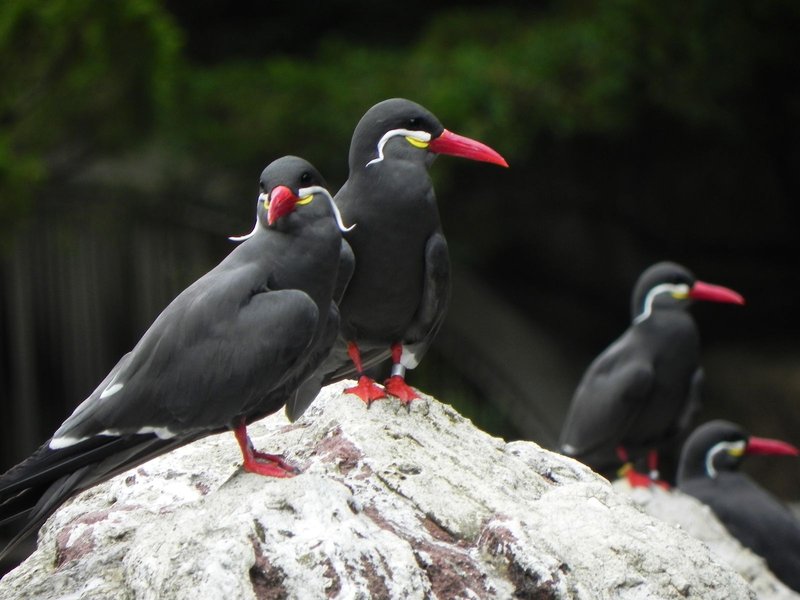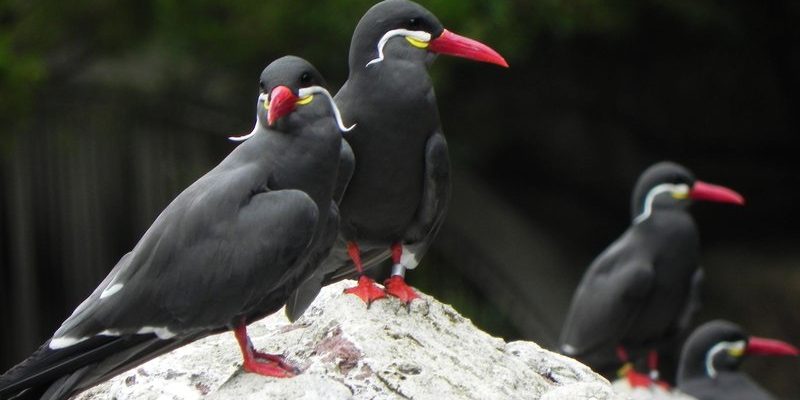
Terns are fascinating seabirds that belong to the family Sternidae. Think of them as the elegant acrobats of the bird world, known for their graceful flight and striking appearance. Often found along coastlines and in wetlands, these birds are a joy to observe in their natural habitats. With their long wings and sleek bodies, terns can dive into the water at impressive speeds, making them skilled hunters.
You might be wondering why terns are such beloved birds among birdwatchers and ornithologists alike. It’s partly due to their migratory behavior. Some species of terns travel thousands of miles every year, navigating from breeding grounds in the Arctic to wintering sites in the southern hemisphere. Their journeys inspire awe and admiration for their endurance and adaptability.
With over 40 different species of terns, each one has its unique traits and characteristics. Some terns are small and agile, while others are larger and more robust. Regardless of their size, all terns share a common beauty that captures the hearts of nature lovers around the world.
Physical Characteristics
Terns are recognized for their striking physical features that make them stand out in the avian world. Most terns have long, pointed wings, which allow them to soar gracefully over the water. Their bodies are streamlined, enabling them to dive quickly in pursuit of fish. The plumage of terns can vary across species, but many exhibit striking black and white coloration, often with a touch of gray or pastel shades.
Let’s take a closer look at some common attributes of terns. They typically have a slender bill, adapted for catching fish. Their legs are relatively short compared to their body, and they are often positioned far back on the body, giving them a unique silhouette. Terns’ coloration can also change during breeding season, with some species developing brighter hues to attract mates.
The size of terns can vary widely. For example, the smallest tern, the Least Tern, measures about 8-9 inches in length, while larger species like the Royal Tern can reach up to 20 inches. This size variation showcases the diversity within the family and contributes to their adaptability in various environments.
| Species | Size | Wingspan | Diet | Habitat |
| Common Tern | 12-14 inches | 26-30 inches | Fish, small crustaceans | Coastal areas, lakes |
| Arctic Tern | 12-14 inches | 28-32 inches | Fish, zooplankton | Coastal areas, tundras |
| Royal Tern | 16-20 inches | 38-44 inches | Fish, marine invertebrates | Coastal areas, sandy beaches |
Habitat and Distribution
Terns are versatile birds that thrive in a variety of habitats, primarily along coastlines, estuaries, and freshwater lakes. They often prefer sandy or gravelly beaches for nesting, where they can build their nests in simple scrapes on the ground. This choice of nesting site highlights their trust in the open areas and their need for proximity to water.
Geographically, terns can be found on every continent except Antarctica. During migration, some species travel from the Arctic regions to warmer waters in the southern hemisphere. The Arctic Tern, for instance, has the longest migration route of any bird, covering approximately 44,000 miles round trip. You can only imagine the incredible sights they witness along the way!
The distribution of different tern species varies considerably. While some species remain local to their breeding grounds, others are more migratory. Environmental factors, such as availability of food and nesting sites, can greatly influence their habitat choices. This adaptability allows terns to thrive in changing environments, showcasing their resilience as a species.
Feeding Habits
The diet of terns primarily consists of fish and other small aquatic animals. Their keen eyesight allows them to spot fish swimming near the surface of the water. Once they spot a meal, terns dive gracefully, often plunging straight into the water with remarkable precision. This hunting technique not only showcases their agility but also highlights their role as important players in the ecosystem.
Terns have a variety of feeding strategies depending on the species. Some opt for surface diving, while others may engage in hover-feeding—where they fly above the water and then dive down to catch fish. This versatility in hunting methods ensures that they can find food in various conditions. You might even see them working together in flocks, driving fish toward the surface to make feeding easier.
In addition to fish, terns also consume small crustaceans and even insects, particularly during the breeding season when chicks are being fed. Their ability to adjust their diet based on available food sources is crucial for their survival and reproductive success.
Breeding and Nesting
The breeding season for terns typically begins in late spring and lasts through summer. Most terns are monogamous for the breeding season, forming strong pairs to raise their young. They commonly rely on colonial nesting, where many pairs nest close together. This strategy provides safety in numbers, allowing them to defend against potential predators more effectively.
Nests are often simple and consist of a small scrape in the ground, sometimes lined with pebbles or shells. Female terns lay anywhere from 1 to 5 eggs, depending on the species. Incubation generally lasts around 21 to 28 days, and both parents share the responsibility of keeping the eggs warm and protecting them from predators.
Once the eggs hatch, tern chicks are precocial, meaning they are relatively mature and mobile shortly after birth. However, they still rely on their parents for food and protection. Watching the parents feed their chicks is a touching sight. They’ll often bring back small fish or other prey, showcasing their dedication to ensuring the survival of their young.
Conservation Status
Like many wildlife species, terns face significant threats from habitat loss, climate change, and pollution. Coastal development and human activities can lead to the destruction of nesting sites, making it challenging for terns to find suitable places to raise their young. Moreover, rising sea levels and changing weather patterns can further disrupt their natural habitats.
Several species of terns are currently listed as threatened or endangered. Conservation efforts are crucial to help protect these birds and their habitats. Initiatives such as creating protected nesting areas and working to reduce pollution can significantly impact their populations. Awareness and active participation from local communities can also help drive effective conservation strategies.
Volunteering for bird conservation programs or participating in local clean-up efforts can make a tangible difference. Every small action counts, and together we can help ensure that future generations will be able to experience the beauty of terns and other wildlife in their natural habitats.
FAQ
Are terns found worldwide?
Yes, terns can be found on every continent except Antarctica. They thrive in coastal areas, estuaries, and freshwater lakes, showcasing their adaptability to various habitats.
What do terns eat?
Terns primarily feed on fish, but they also eat small crustaceans and insects, especially during the breeding season. Their diet can vary based on what’s available in their environment.
How do terns nest?
Terns typically create simple nests by scraping the ground in sandy or gravelly areas. They often nest in colonies, which offers them protection against predators.
How long does it take for tern eggs to hatch?
Egg incubation for terns generally lasts between 21 to 28 days. Both parents share the responsibility of keeping the eggs warm until they hatch.
Why are terns endangered?
Habitat loss, climate change, and pollution are significant threats to terns. Coastal development can destroy nesting sites, while rising sea levels impact their habitats.
Do terns migrate?
Yes, many species of terns are migratory. Some travel thousands of miles between their breeding grounds in the Arctic and wintering habitats in warmer regions.
What is unique about the Arctic Tern?
The Arctic Tern holds the title for the longest migration of any bird, covering approximately 44,000 miles round trip every year. Their incredible journey is an awe-inspiring feat of endurance.
How can I help protect terns?
Involvement in local conservation efforts, such as habitat restoration and pollution reduction initiatives, can help protect terns. Education and awareness about their plight are also crucial for their survival.
What are some common species of terns?
Some common species include the Common Tern, Arctic Tern, and Royal Tern. Each species has distinct characteristics but all share similar feeding habits and nesting behaviors.
Where can I see terns in the wild?
Terns can typically be seen along coastlines, beaches, and wetlands. Visiting these areas during their breeding season can offer opportunities for observing them in their natural habitat.
Are terns social birds?
Yes, terns are known to be social birds, especially during the breeding season. They often nest in colonies and can be seen flying together while hunting for food.
How fast can terns dive?
Terns can dive at impressive speeds, reaching up to 60 miles per hour when catching their prey. This incredible agility is one of the traits that make them such efficient hunters.
What sounds do terns make?
Terns are vocal birds, often producing a variety of calls to communicate with each other. Their calls can range from sharp, high-pitched notes to more elongated sounds that can be quite distinctive and easily recognized.

